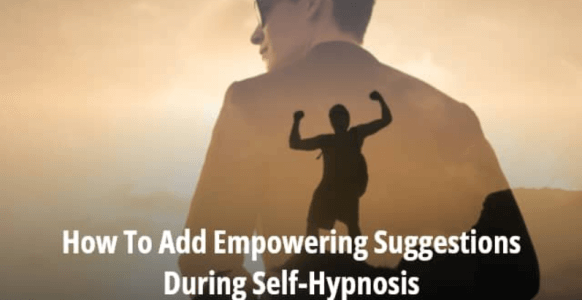
Have you ever found affirmations to be a bit of a mixed bag? When they work, they can feel amazing, like you’ve unlocked a hidden power within yourself. But when they don’t, they can feel frustrating, or even make things worse. If you’ve been in the latter camp, you’re not alone. Many people struggle with affirmations that just don’t seem to “stick” or make the desired impact.
The good news? There is a reason why affirmations sometimes fail, and even better, there’s a way to fix it using hypnosis. Read on to discover why affirmations often miss the mark and what you can to do make them work for you. So dive in and get ready to finally unlock the power of affirmations!
Why Some Affirmations Don’t Work
Affirmations are positive statements you repeat to yourself, like, “I am confident,” or “I am patient.” The idea is that by repeating these statements, they will eventually become your reality. When they work, they help reinforce positive beliefs. But when they don’t work, it’s usually because there’s an internal conflict—a part of you just doesn’t believe what you’re saying.
Imagine telling yourself, “I am extremely patient,” when deep down, you know you’re often far from patient. Your unconscious mind sees through this immediately.
Your unconscious recognizes that the affirmation is not true, and instead of helping you become more patient, it builds resistance.
Essentially, the more you tell yourself something you know isn’t true, the more your mind rejects it, creating a psychological “allergy” to that very quality you’re trying to cultivate.
So what’s the key to making your unconscious mind accept what you’re telling yourself?
The Key to Effective Affirmations
The secret to making affirmations work is to base them in truth—truth that your unconscious mind can accept. Rather than trying to force yourself to believe something you clearly don’t, start with something that feels true. This is where hypnosis comes in, helping to align your affirmations with what your mind can comfortably accept.
Let’s break down the process of transforming a stubborn affirmation into something that works:
1. Start With What’s True
Instead of jumping straight into an affirmation like “I am very patient” (which might feel untrue), take a step back and find a version of the affirmation that is honest. Ask yourself if there’s ever been a time when you were patient. If the answer is yes, then a more accurate affirmation would be, “Sometimes, I can be patient.”
Notice how this new affirmation feels different. Instead of resistance, there’s a sense of truth.
Your body and mind can accept this statement because it’s rooted in your actual experience. This creates a positive foundation that your unconscious mind can build upon.
2. Gradual Progression
Once you’ve established an affirmation that feels true, the next step is to gradually build on it. Over time, you can shift your affirmation from “Sometimes, I can be patient” to “Often, I can be patient,” and eventually to “I am usually patient.”
By slowly adjusting your affirmations in this way, you’re guiding your unconscious mind without triggering resistance. You’re not trying to force a belief that doesn’t align with your current experience; instead, you’re letting your belief grow naturally, one step at a time.
3. Check In With Your Body
A critical aspect of making affirmations work is listening to your body’s response. When you say an affirmation, notice how it makes you feel.
If it feels good—if there’s a sense of ease or comfort—that means your unconscious mind is accepting it. If it feels wrong or creates tension, that means your mind is rejecting it.
Your body is like a barometer for your unconscious acceptance.
Use it to gauge whether an affirmation is working for you. If you feel resistance, it’s a sign that you need to adjust the affirmation to something more truthful and acceptable.
4. Harness the Power of Hypnosis
Hypnosis is an excellent tool to help reinforce affirmations. When you’re in a hypnotic state, your unconscious mind is more receptive to suggestions, making it easier for you to internalize positive beliefs. You can use self-hypnosis to guide your mind through this process.
Here’s how:
- Relaxation: Start by getting comfortable and taking a few deep breaths. Allow yourself to relax, closing your eyes if that feels comfortable.
- Affirmation: Begin by repeating your truth-based affirmation, such as “Sometimes, I can be patient.” Say it slowly, and notice how your body responds.
- Visualization: Imagine a time when you were patient. Picture the scene in your mind and notice how you felt in that moment. This helps reinforce the affirmation by connecting it to a real experience.
- Repetition: Repeat this process regularly. The more often you repeat your affirmation in a relaxed, focused state, the stronger it will become.
Hypnosis essentially amplifies the power of affirmations by helping bypass the critical, resistant part of the mind, allowing you to more deeply connect with your desired belief.
Building Positive Momentum
Another helpful strategy is to affirm general ideas that feel undeniably positive. For instance, if you struggle with patience, you could start with, “It’s good to be patient.”
This statement doesn’t directly challenge any current belief, and it allows your unconscious mind to focus on the value of patience without resistance. From there, you can move to affirmations like, “I like it when I am patient,” and gradually build on that idea.
By focusing on positive, non-threatening statements, you create a snowball effect, where your unconscious begins to feel more comfortable with the idea of patience. Over time, your affirmations will build momentum, and you’ll start to notice real changes in your behavior.
The Law of Attention
There’s an important concept at play here, known as the “law of attention.” Essentially, where attention goes, energy flows, and that thing grows.
By placing your attention on moments when you were patient—no matter how small or infrequent—you’re signaling to your unconscious mind that patience is a valued quality. Your mind will begin to reinforce those experiences, making it easier to be patient in the future.
This is why affirmations work best when they are grounded in genuine experience. When you place your attention on a truth, however small, you allow it to grow, and that’s when affirmations can truly become transformative.
Bringing It All Together
To make affirmations finally work for you, remember these key points:
- Base Your Affirmations in Truth: Start with a statement that feels true and believable. If “I am confident” feels like a lie, try “Sometimes, I feel confident.”
- Progress Gradually: Slowly adjust your affirmations as they become more comfortable, moving from “sometimes” to “often” to “usually.”
- Listen to Your Body: If an affirmation feels wrong, change it. Your body will tell you if your unconscious mind is rejecting or accepting an affirmation.
- Use Hypnosis to Amplify: Practice self-hypnosis to help your unconscious mind become more receptive to your affirmations, reinforcing them more effectively.
- Focus on Positive Attention: Remember the law of attention—focus on the qualities you want to grow, and your unconscious mind will follow suit.
Affirmations don’t have to be frustrating or feel like wishful thinking. With these practical steps and the power of hypnosis, you can finally make them work for you, helping you to build the qualities and life you desire. Start small, stay consistent, and watch as your affirmations begin to shape your reality in a positive, lasting way.
If you’re ready to dive deeper into the world of self-hypnosis and harness its power to make your affirmations truly effective, consider checking out our program: The Power of Self-Hypnosis.
This program is designed to guide you step-by-step, helping you build the skills you need to create real, lasting change in your life through self-hypnosis. Take the next step towards transforming your affirmations today!







![Yogic Breathing For Hypnosis: 3 Easy Techniques To Ground & Relax Your Clients Before Inducing A Hypnotic Trance [Includes Infographic] Yogic Breathing For Hypnosis: 3 Easy Techniques To Ground & Relax Your Clients Before Inducing A Hypnotic Trance [Includes Infographic]](https://hypnosistrainingacademy.com/wp-content/uploads/2019/05/yogic-breathing-for-hypnosis.jpg)
![[ADVANCED GUIDE] How To Master Hypnotic Regression Therapy - Part I: Essential Principles To Profoundly Transform Your Subject’s Emotional Trauma [ADVANCED GUIDE] How To Master Hypnotic Regression Therapy - Part I: Essential Principles To Profoundly Transform Your Subject’s Emotional Trauma](https://hypnosistrainingacademy.com/wp-content/uploads/2016/09/hypnotic-regression-therapy-essential-principles.jpg)



